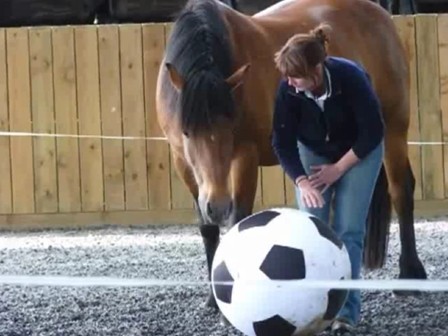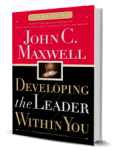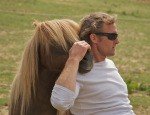
by Julia Felton | Nov 27, 2011
I recently came across this article that I wanted to share with you as I feel it could help some of you explain what is happening in your own lives. Often we fail to do things not because we can’t but because of a fear of failure. This got me thinking about training my horses and working with my clients. Do I sometimes not do things because I’m afraid of failure? I’s love to read your thoughts on this really interesting perspective on life.
If you have a habit of not finishing what you start, you may have attributed your lack of results to disorganization or a lack of focus. For some individuals, however, this habit is signs of an underlying psychological pattern of playing not to lose.
Stuart Emery, author of Life is Not a Dress Rehearsal and Success Built to Last, noted that where most people tackle situations with a goal of winning, others approach life with a goal of avoiding losing. Somewhere in life, they decided that they were incapable of winning and have lowered their expectations to merely not coming in last.
The groundwork for this pattern is often laid in childhood. For example, if a father raves over his young daughter’s drawing, she may have next colored on the wall, not recognizing that the wall is not an appropriate place to express artwork. After repeated incidents of getting in trouble in such a way, she may have drawn the conclusion that she couldn’t win. She didn’t like the pain of not winning, so she unconsciously adopted the strategy of trying not to lose in the future.
Not finishing what you start is one of many habits you fall back on when playing to not lose. The reason this has worked for you in the past is that if something is incomplete, it cannot be judged as not good enough. You can just say that it’s not “finished.”
Other ways we ‘play not to lose” include:
- Playing the Judge. By being the judge, you never have to be the participant. By pointing out how imperfectly others are dancing, for instance, you get to avoid dancing yourself, which could open the door to you failing at the task.
- Being perfect. With this approach, you attempt to not lose by doing everything as perfectly as you can… or at least by presenting a front that you are “perfect.” You never really relax or let your guard down. Instead, you overdo everything instead.
- Becoming a “problem.” If you take on the role of the identified problem, others will need to stop and take care of you. This is a form of sabotage. Because others are directing their time and energy into helping you and are less likely to win themselves.
If you recognize that you’ve been playing not to lose, it’s time to shift the behaviour.
Embrace Feedback
Your decision to stop playing to win was most likely unconscious. You received feedback that you interpreted as being a condemnation of your abilities and who you are. An important step in shifting this pattern will be recognizing feedback for what it is: Information that tells you whether you are on course or off course.
When you get negative feedback – such as lack of results, little or no money, criticism, poor evaluation, inner conflict, and unhappiness – it’s a sign that you are moving away from your intended goal. Evaluate what you’re doing and make a course correction. When you receive positive feedback, such as praise, happiness, money and results, you’ll know that you are back on course.
Sharpen Your Focus
Another thing you can do, particularly if you’ve developed a habit of not completing what you start, is to train yourself to sharpen your focus. In the Achievers Focusing System, Les Hewitt, author of The Power of Focus, teaches his clients to focus their attention only on what they want to accomplish in the next three months. They select one goal in each area of their lives during that period.
Then, each week, they identify the three most important things that must be accomplished during that 7-day period to move them closer to their goals. A weekly check-in with your accountability partner helps to keep you accountable for achieving these tasks.
To download a free copy of the Achievers Focusing System 3-month planner, click here.
Chunk It Down
One final word of advice: As you begin to build a new habit of completing what you start, you may feel overwhelmed and lost about what to do next when you look at your list of goals. The best approach is to chunk down your goals into small, manageable steps.
Interview people who have already accomplished what you want to do and ask them to share all of the steps they took. If you can find a book or manual that guides you through the process, even better. Another approach is to imagine that it’s the future and you’ve already accomplished your goal. Start at the end and look backward. Notice what you had to do to get to where you are.
Capture all of these steps in a list or mind map. Then convert all of your to-do items into daily action items that can be plugged into your calendar. Start with the first item on your list, and when it’s finished, cross it off and tackle the next item. Before you know it, you’ll be completing projects and well on your way to playing to win.
Playing not to lose may protect you from the potential pain of negative feedback. But the cost is steep. Every time you fail to live up to the commitments you make to yourself and others, you undermine your self-confidence. Use the steps outlined in this article to identify why you’ve settled for simply not losing and to take the corrective action you need to complete what you start.
Julia Felton (aka The Business Wrangler) is the founder of Business HorsePower. Business leaders, entrepreneurs and executives hire her to accelerate their business performance by harnessing the energy of their people to work more collaboratively together. By aligning purpose with actions the team achieves exponential results as everyone starts pulling in the same direction.
Julia believes that business is a force for good and through designing purpose-driven businesses that leverage the laws of nature, and the herd, you can create businesses founded on the principles of connection, collaboration and community that make a significant impact in the world.

by Julia Felton | Nov 15, 2011
The Top 3 Stars in the news, based on Roger James Hamilton’s Talent Dynamics System, continues with the series highlighting each of the Top 3 newsmakers in each category. Stars are not the same as simply Hollywood stars or rock stars, but entrepreneurs who follow the Star strategy of building their brand rather than products to attract their fortune.
Oprah Winfrey (USA) – Stars are finding that their traditional leverage channels are changing. Oprah Winfrey has rolled with the changes, shifting her focus from her Oprah Winfrey Show (which ended this year) to OWN – The Oprah Winfrey Network. This is the trend with many of the top Stars, who are extending their brand beyond the media which made them a household name. Oprah is now worth $2.7 billion, and is the richest self-made woman in the world.
Ashton Kutcher (USA) – A tireless self-promoter, Ashton Kutcher has leveraged his brand beyond his media celebrity to become a successful angel investor. He is pioneering a new genre of young stars who are no longer relying on the media for their paycheck. His self-promoted campaign to become the first twitter account with 1 million followers succeeded in giving his company, Katalyst Media, in the spotlight. He’s now an investor in tech start-ups Airbnb, Foursquare and Flip, and leverages his brand to attract extra attention to them. He has a net worth of over $140 million.
Al Gore (USA) – The US Political System is designed to favor Star profiles. Stars have reached the Presidency every year since Roosevelt (This is the opposite of China, that consistently puts Lord profiles in the top spot). What do Star politicians do when they leave politics? Al Gore has used his brand to continue to promote his ‘Inconvenient Truth’ mission of saving the environment. This is making him money as he goes. He heads climate change investments at famous VC firm Kleiner Perkins Caufield & Byers, is an Apple Board Director and Google Advisor, and has a net worth of over $100 million.“As the world economy moves deeper into Winter Season, the smart Star profile entrepreneurs are diversifying and seeking to ride waves in new media and new ways to leverage their brand. The collapse of old media channels with accelerate as Stars migrate to new media, bringing their audiences with them.” – Roger James Hamilton
Julia Felton (aka The Business Wrangler) is the founder of Business HorsePower. Business leaders, entrepreneurs and executives hire her to accelerate their business performance by harnessing the energy of their people to work more collaboratively together. By aligning purpose with actions the team achieves exponential results as everyone starts pulling in the same direction.
Julia believes that business is a force for good and through designing purpose-driven businesses that leverage the laws of nature, and the herd, you can create businesses founded on the principles of connection, collaboration and community that make a significant impact in the world.

by Julia Felton | Oct 15, 2011
The Top 3 Deal Makers in the news, based on Roger James Hamilton’s Talent Dynamics System, follow on within this series highlighting each of the Top 3 newsmakers in each category. We are seeing industries that have reached a saturation in their market increasingly turn to the Deal Makers to bring together old value to create something new, so we see this play out most prominently in the media industry, and in countries with emerging domestic markets, like India and China. Here are the Top 3.
Rupert Murdoch (USA) – Several years ago Roger Hamilton predicted that traditional print media would become increasingly sensationalist to try and retain readers, and when it fell, it would do so by going to far, creating news and scandal. Murdoch has been on the receiving end of that this year with the News International phone hacking scandal. Even so, he remains up in Forbes’ and Times’ list of the most influential people in the world.
Simon Cowell (UK) – A product of the shift in power of media to the Deal Makers, Cowell has built a reality TV platform with the likes of American Idol, the X-Factor and Britain’s Got Talent. Originally a deal maker for pop bands, he has used this platform to attract talent, and he then makes the money by signing the best talent to his agencies after the public vote them in. He is now worth over £200 million.
Anil Ambani (INDIA) – Reflecting the boom in consumer industries in India, Ambani has made it big in finance and media, recently doing a $825 million deal to bring Steven Spielberg’s studio to India. He is now the fourth richest man in India with $8.8 billion, behind Azim Premi, Laksmi Mittal and his brother, Mukesh Ambani.
“What we can expect to see in the coming years is a shift of the deal makers to the new industries that are moving from summer to autumn. That means expect to hear of venture capitalists making it big in China and India, and brand name deal makers behind deals in media, communications, and public offerings in emerging countries.” – Roger James Hamilton
Want to find out whether or not you are a Deal Maker. Take the Talent Dynamics Profile Test here and find out.
You can read about the other eight Talent Dynamics profiles here.
Julia Felton (aka The Business Wrangler) is the founder of Business HorsePower. Business leaders, entrepreneurs and executives hire her to accelerate their business performance by harnessing the energy of their people to work more collaboratively together. By aligning purpose with actions the team achieves exponential results as everyone starts pulling in the same direction.
Julia believes that business is a force for good and through designing purpose-driven businesses that leverage the laws of nature, and the herd, you can create businesses founded on the principles of connection, collaboration and community that make a significant impact in the world.

by Julia Felton | Oct 14, 2011
Here are the Top 3 Lords, based on Roger James Hamilton’s Talent Dynamics System. As the global economy is in winter, it is the Lord Profiles who are shining through, creating cash flow from their assets and managing their risk carefully.
Sergey Brin (USA) – Sergey is co-founder of Google together with his Mechanic profile partner, Larry Page. Sergey is 38 years old and worth $20 billion. Constantly analyzing data and detail, he has created in Google a perfect example of a Lord business, where it doesn’t need to own the asset (content) because it controls the most effective access to the asset and charges every time.
Lakshmi Mittal (UK) – Originally from India, Lakshmi has become the richest man in England through his steel empire, making him a modern-day Carnegie. Like Sergey, he makes his money by finding efficiencies and then dominates the industry through economies of scale. Today he is worth $38 billion.
Gina Rinehart (Australia) – Another favourite industry for Lords is the mining industry. Gina controls mines in Western Australia and as the Global Economy has gone into winter season, China has stocked up on ore, making Gina the first female billionaire in Australia and the richest Australian with $2 billion in wealth.
Next Roger Hamilton will cover the Top 3 Accumulators making the news today. In the same way that the most successful Lords are stepping into their flow as the markets move, the Accumulators have recently enjoyed their wave, rising to become the wealthiest in the world today.
Want to find out whether or not you are a Lord. Take the Talent Dynamics Profile Test here and find out.
You can read about the other eight Talent Dynamics profiles here.
Julia Felton (aka The Business Wrangler) is the founder of Business HorsePower. Business leaders, entrepreneurs and executives hire her to accelerate their business performance by harnessing the energy of their people to work more collaboratively together. By aligning purpose with actions the team achieves exponential results as everyone starts pulling in the same direction.
Julia believes that business is a force for good and through designing purpose-driven businesses that leverage the laws of nature, and the herd, you can create businesses founded on the principles of connection, collaboration and community that make a significant impact in the world.

by Julia Felton | Oct 4, 2011
The Top 3 Supporters in the news, based on Roger James Hamilton’s Talent Dynamics System, continues with the series highlighting each of the Top 3 news makers in each category. Like waves in the ocean, every peak is balanced by a trough. Of as the Lords build their wealth in the ‘winter’ of the global economy, it is the Supporters, on the other side of the square, who need to bide their time or reorganized themselves in the trough. Here are the Top 3 Supporters in the news. Not surprisingly, they are each in the news as parts of companies that are either winter profile or that find themselves in the winter season.
Eric Schmidt (USA) – The CEO of Google for ten years, Schmidt finally stepped down this year to allow Larry Page, a Mechanic Profile, to prepare Google for the next big wave. Schmidt remains on as Executive Chairman, where he is spending much more time on compliance issues and answering to the Government. This is the fate of Supporter profiles when their company reaches this phase of business.
Meg Whitman (USA) – The previous CEO of eBay, brought in to build eBay into the world’s largest online auction platform, made several deal-making missteps, which led her to leave eBay in 2008. She then went on to spend over 10% of her $1.3 billion fortune on her bid to become Governor of California. Despite spending more than any other candidate, she still lost to Jerry Brown, a Star profile who simply shone brighter during the elections. She has again hit the news in September with her appointment as the new CEO of HP – a company that has gone into the depths of winter.
Howard Shultz (USA) – Shultz grew Starbucks into a global giant after taking it over from the founders, building a net worth of $1.1 billion. His book “Pour your heart into it” is a perfect leadership bible for Supporters. Since 2009, Starbucks has closed 900 stores in the US, and is now going through a period of consolidation, with more of a focus on global distribution deals to sell their coffee rather than new store openings.
“While we see high-profile Supporters in the USA taking on more of a lower profile as the Western World moves into winter, we will see more Supporter profile leaders in Asia step into the limelight as the top CEOs of the most profitable companies globally in the coming years.” – Roger James Hamilton
Want to find out whether or not you are a Supporter. Take the Talent Dynamics Profile Test here and find out.
You can read about the other eight Talent Dynamics profiles here.
Julia Felton (aka The Business Wrangler) is the founder of Business HorsePower. Business leaders, entrepreneurs and executives hire her to accelerate their business performance by harnessing the energy of their people to work more collaboratively together. By aligning purpose with actions the team achieves exponential results as everyone starts pulling in the same direction.
Julia believes that business is a force for good and through designing purpose-driven businesses that leverage the laws of nature, and the herd, you can create businesses founded on the principles of connection, collaboration and community that make a significant impact in the world.

by Julia Felton | Sep 28, 2011
Although Horse Assisted Coaching is a relatively new learning modality it is a form of action based or experiential learning, which is certainly not new. The earliest beginnings of experiential learning are rooted in programs like Project Adventure and Outward Bound. Corporations around the world adopted outdoor experiential learning as evidenced by a famous segment in the 1990′s sitcom Murphy Brown. Its use began to diminish, as other popular concepts replaced them, from the emotional intelligence movement to strengths-based leadership. But like the timeless needs that corporations have for personal commitment, team collaboration and innovative risk-taking, experiential learning continues to thrive.
Tim Buividas of the Corporate Learning Institute (CLI) defines experiential learning as “activities that include any active learning experience which offers a chance to learn from failure, success and everything in between. It has to include the possibility of transferring learning back to the workplace. Examples of active learning or experiential learning activities include ropes courses, problem solving games, and many indoor events. Any indoor active learning session includes a learning cycle. For an experiential session to be effective, participants have to experience, review, discuss, and apply their experiences”, Buividas concluded.
Can experiential activities help your individual contributors, teams and leaders develop collaboration and problem solving skills? I absolutely believe that participating in a horse assisted coaching session will bring untold benefits to any organisation. In my experience team members leave more focused and committed having had in many cases true insights into what is happening both in their personal and professional life. These AHA (Accelerated Horse Awareness) moments cause a quantum shift in people allowing them to see things with a new perspective. Oftentimes a greater appreciation of the challenges faced by co-workers is observed resulting in a more collaberative environment when team members return to work.
Trust is one of the major new commodities of the environment we live in and horses are great at helping individuals develop this essential life skill. Let’s face it if we don’t trust the people we work with then we won’t achieve much and all our energy will be taken up focusing on negative things and protecting our position. How much more effective can an organisation can be when everyone trusts each other?
So if you are looking for a new innovative way to bring a different perspective to your leadership and team building trainings then please consider Horse Assisted Coaching. Its really effective, fun and the ROI is significant. Horse Assisted Coaching might not yet be in the mainstream of learning and development but it should be because in my experience most of the current offerings are not delivering on their promises and as Einstein said: “The definition of insanity is doing the same thing time and time again and expecting different results”. So come on, try it and see what benefits your organisation can get, I’m sure you will be pleasantly surprised.
Julia Felton (aka The Business Wrangler) is the founder of Business HorsePower. Business leaders, entrepreneurs and executives hire her to accelerate their business performance by harnessing the energy of their people to work more collaboratively together. By aligning purpose with actions the team achieves exponential results as everyone starts pulling in the same direction.
Julia believes that business is a force for good and through designing purpose-driven businesses that leverage the laws of nature, and the herd, you can create businesses founded on the principles of connection, collaboration and community that make a significant impact in the world.

by Julia Felton | Sep 5, 2011
“Skill set without mindset results in upset”, these words of Rob Moore from Progressive Property are still ringing in my head after the amazing weekend I experienced at the Power to Achieve Seminar led by Andy Harrington. The entire weekend was devoted to shifting my perspective to having a “Millionaire Mindset” by really pushing you through your comfort zone. Over the course of the weekend I broke a one inch think wooden board with my hand and with a colleague bent a 1.5 metre metal rod using our throats. When you achieved both those feats, which quite frankly I thought would be impossible, then you believe that anything is possible in life. All too often we go through life believing that things are not possible, when quite frankly everything is achievable if you have enough focus, certainty and a big enough reason to do it. Of course the activity of breaking the board and bending the metal rod were made much easier by the fact that there were over 100 people urging me on to do it. Yet, how often in our daily lives do we have that number of people urging us on to achieve our goals. In my experience it’s usually the opposite, loads of people telling us how we can’t achieve our goals. No wonder the majority of people fail to achieve their dreams and settle for a life of mediocrity. How sad is that.
So what has this got to do with horses you might ask, well Rob’s quote I feel sums up so well that I observe happening in the equestrian world. There are loads of equestrian people out there with great skills and yet I see equally as many upset horses. Horse owners are always complaining to me about the bad behaviour of their horses – he bites, kicks, pushes me around, doesn’t do what I want – and yet what I also observe is that these people are in the wrong mindset. They turn up to “work” with their horses in a bad emotional state. Their mind is racing thinking of all the other things they have to do today, what happened yesterday, in fact anything to stop them being present and in the here are now. And these thoughts trigger off a range of emotions. For example, anger, rage, frustration, confusion. As master communicators horses read what state we are in and respond appropriately. Have you ever noticed that when you are anxious and in a hurry to load your horse to get to the show guaranteed your horse will never load. I had an experience of this yesterday morning when I went to check my horses. Toby (who is a bit overweight) had managed to get his grazing muzzle off overnight. I was in a rush to get to London to this seminar and sure enough I couldn’t catch him for love nor money to put the grazing muzzle back on. Funny how that happens.
So why is mindset so important when we are working with our horses. In my opinion if you are not in a good emotional state then your horse will not connect with you If your mind is chattering away detailing all the things that you need to do that day, then you will never be present and aware of what is happening around you. And as we know we can’t be a good leader for your horse if your attention is elsewhere. So every time you go to the barn or yard just spend a few minutes and think about how your mindset is right now, and if it’s not great change it because you can have the best skills in the world but if you fail to get into the right mindset then you won’t attract the results you desire and upset will occur.
Julia Felton (aka The Business Wrangler) is the founder of Business HorsePower. Business leaders, entrepreneurs and executives hire her to accelerate their business performance by harnessing the energy of their people to work more collaboratively together. By aligning purpose with actions the team achieves exponential results as everyone starts pulling in the same direction.
Julia believes that business is a force for good and through designing purpose-driven businesses that leverage the laws of nature, and the herd, you can create businesses founded on the principles of connection, collaboration and community that make a significant impact in the world.

by Julia Felton | Aug 29, 2011
In my last post we learnt how focus and clarity helped “Susan” when she was in the picadero with a horse. Today, I’d like to share some of the teachings of one of my other great mentors (apart from my horses) in the art of leadership, John C Maxwell. For some years now I’ve been in the habit of revisiting books that had a profound impact on my thinking. It’s a powerful process, I find new insights and understandings I hadn’t experienced before, not because there’s been any change in the content of the book of course, but because of the changes in me since I first read the book. My awareness has shifted, resulting in my ability to see things in the book I wasn’t able to see previously.
Recently, I returned to John’s ‘Developing the Leader Within You’, and one of it’s messages hit me like a train. It was a message relating to vision, perception, thinking and potential.
Casting vision ignites potential. Too many people fail to create a compelling vision for what they aspire to in their lives, and what can’t be seen with the mind can’t be created in life. What you see is what you can be, and what you see is what you get.
I’ve worked with many business leaders who cast vision for their business and never for themselves. This is a major error. Without a personal vision of success, an individual is nothing more than a wondering generality in life.
Having a career is one thing, shaping one on your own terms is another. Lacking vision, a person is a like a ship adrift at sea without destination, it’s the tide that governs the path. Despite the biblical warning of ‘where there is no vision the people perish’ many people are still choosing to live life this way.
Then there’s perception. The way a person chooses to see things has a massive impact on their success in life. Konrad Adenauer once said ‘we all live under the same sky, but we don’t all have the same horizon’.
Henry Ford was told repetitively by his most senior engineers that his idea to create an eight-cylinder automotive engine was ‘impossible’. Over a two year period he continually sent them away to ‘make it so’, only for them to return with the same message. He refused to accept their beliefs, and eventually they overcame the obstacles and ‘made it so’. Ford and his engineers lived under the same sky yet had very different horizons.
What you see is what you get. What are your horizons? Where’s your thinking?
Julia Felton (aka The Business Wrangler) is the founder of Business HorsePower. Business leaders, entrepreneurs and executives hire her to accelerate their business performance by harnessing the energy of their people to work more collaboratively together. By aligning purpose with actions the team achieves exponential results as everyone starts pulling in the same direction.
Julia believes that business is a force for good and through designing purpose-driven businesses that leverage the laws of nature, and the herd, you can create businesses founded on the principles of connection, collaboration and community that make a significant impact in the world.

by Julia Felton | Aug 12, 2011
The picadero – much like a round pen with corners – is a place where we can explore our own truths and look in the mirror of how we relate to others. With our equine partner, we have the opportunity to experience the impact of our presence – our emotions and energy – on others. This experience can be a very powerful metaphor, as was the case with “Susan,” a participant in one of the corporate HorseSense programs we facilitated recently.
Susan is the Office Manager for an executive search firm in the northeastern United States. She had never been around horses before our program, and seemed to be enjoying her interactions with them very much. Still, she entered the picadero with some trepidation, gripping the flag tightly in her left hand, unsure of how to proceed with Chip, a large Appaloosa gelding who was a veteran of a number of our programs. Susan approached Chip in an attempt to establish a connection with him. Dropping the flag to the ground between her own and Chip’s front feet, she held out her hand in silent gesture of “hello”. Chip expressed mild interest in the flag, nosing it lightly, and ignored Susan.
We watched as Susan tried more affirmatively to connect with Chip, moving closer to him, tentatively stroking his neck with her right hand, holding the flag aloft in her left hand near Chip’s head, and occasionally shaking it. When these gestures produced no obvious connection, Susan began to wave the flag at Chip’s left haunch, then his shoulder, then his haunch again – trying to get him to move. Chip stood perfectly still.
Susan’s efforts became increasingly disjointed and remained without effect. It was painful to watch her frustration visibly mounting. After a very long few minutes of being ignored, Susan turned away from Chip looking dejected. She lowered the flag, lowered her head and said, “I just don’t know what to do.”
Nikki joined Susan in the picadero and asked her a few questions. “What would you like Chip to do?” “How would you describe what you’ve tried so far?” “What else might you try?” With a few words of encouragement about the importance of setting your intention and concentrating on being clear when asking for what you want, Nikki stepped out of the arena and left Susan to continue.
Susan seemed to draw inward and we all watched in silence. Then she took a step back from Chip and snapped the flag energetically behind him. Chip raised his head and shuffled forward a few steps. Encouraged, Susan repeated the vigorous snap of the flag. Once again, Chip responded by moving forward a few more steps. Then the dance began in earnest. With each step that Chip took, with each snap of the flag, we could see Susan’s confidence grow until both horse and human were trotting easily around the picadero together. Susan was grinning from ear to ear, carrying herself lightly and openly, radiating excitement and energy.
After a minute or so, Susan stopped trotting, lowered the flag and, having accomplished her objective, moved to leave the picadero, not noticing Chip following behind her like her newest best friend. We motioned to her to turn and look, and then asked her to stand by Chip for a picture of the two of them together.
Once the picture was taken, Susan left the picadero and walked past the group, clearly moved by her experience. Without speaking, Leslie placed a hand on Susan’s shoulder, and Susan started to sob. Leslie asked, “Do you want to talk about what’s coming up for you?” Susan nodded and explained that her experience with Chip mirrored her experience in the office with staff. “I don’t want to hurt anyone’s feelings at work, just as I didn’t want to push Chip with the flag. But they don’t pay attention to what I’m asking for, and I end up feeling frustrated. I see now that I’m so concerned about being nice and getting along with everyone that I don’t really ask for what I want. I don’t want to hurt their feelings, but I end up feeling hurt because I’ve been unclear and they don’t respond.”
Leslie asked, “How did Chip respond to your clarity?” Susan answered, “It was great. Everything flowed so easily after that. We had a great time! This was a huge lesson for me in asking clearly for what I want.”
Not every picadero experience is so profoundly insightful, but the opportunity is there for those who are willing to engage with what they see when they look in the mirror of their equine partner’s eyes.
Article contributed by Nikki and Leslie Kagan, Israel/USA, Fellow HorseDream Professionals
Julia Felton (aka The Business Wrangler) is the founder of Business HorsePower. Business leaders, entrepreneurs and executives hire her to accelerate their business performance by harnessing the energy of their people to work more collaboratively together. By aligning purpose with actions the team achieves exponential results as everyone starts pulling in the same direction.
Julia believes that business is a force for good and through designing purpose-driven businesses that leverage the laws of nature, and the herd, you can create businesses founded on the principles of connection, collaboration and community that make a significant impact in the world.

by Julia Felton | Jul 21, 2011
The horse is the teacher, Louis Wood insists. A real-life cowboy schooled in natural horsemanship (often described as “horse whispering”), Wood takes time away from running his 300-acre ranch in Virginia not only to train horses, but also to help horses train human beings.
Wood’s method of working with a young or difficult horse (though difficult is a misnomer to him; he says it’s often the riders who need the most reaching) is miles away from the traditional method of horse breaking. Instead of trying to dominate a horse, bending its will to his own as in the traditional method, Wood listens and communicates with the animal using body language, establishes trust, partners rather than tries to control, and teaches what the horse is ready to learn.
It is this unusual interplay between man and animal that John Lord, director of the Leadership Development Center at the University of Virginia, wants his students to learn from. The goal of the Horse Sense for Leaders program, built around observation of Wood’s equine training sessions, is not to imitate the cowboy’s individual techniques. Rather, Lord asks participants to observe Wood’s work and listen to his running monologue to generate questions about their own leadership styles and gain new insights.
Watching Wood work real-time with the horses provides an immediacy that role playing can’t, Lord says. Observers can see effective leadership in action and its results minute by minute.
After two days of watching Wood work with the horses, participants brainstorm what they’ve learned with Lord and co-facilitator Tara Telfair. Questions the observers explore include how Wood defines the relationship with the horse and sets expectations, how he communicates, how he motivates, and how he defines success.
Each person will come away with a different set of lessons, Lord asserts. In his own experience of watching Wood, Lord says he didn’t learn something new about leadership so much as gain insights about what he already knew.
The goal is for participants to see their relationships with others through fresh eyes. “If you leave here with something on your mind that’s bothering you,” Lord says, “then we will have succeeded.”
COPYRIGHT 2003 American Society for Training & Development, Inc.
COPYRIGHT 2008 Gale, Cengage Learning
Julia Felton (aka The Business Wrangler) is the founder of Business HorsePower. Business leaders, entrepreneurs and executives hire her to accelerate their business performance by harnessing the energy of their people to work more collaboratively together. By aligning purpose with actions the team achieves exponential results as everyone starts pulling in the same direction.
Julia believes that business is a force for good and through designing purpose-driven businesses that leverage the laws of nature, and the herd, you can create businesses founded on the principles of connection, collaboration and community that make a significant impact in the world.
















